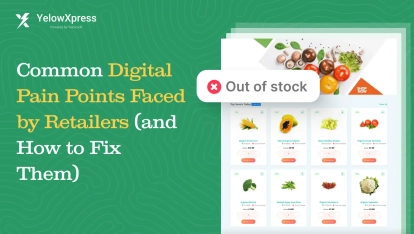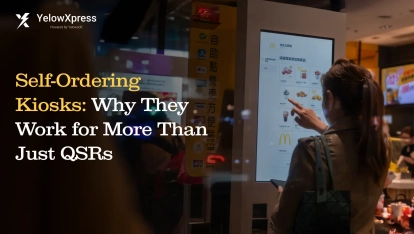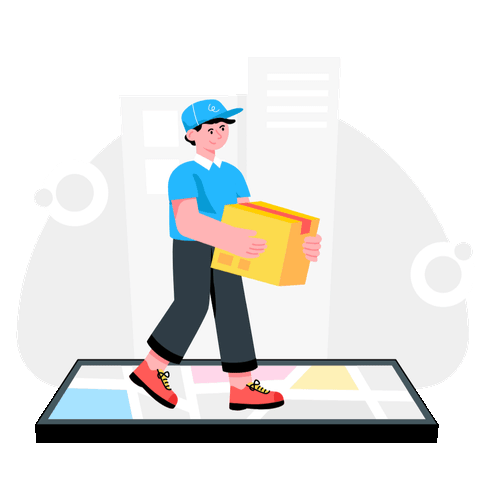Running a multi-outlet business is not the same as managing a single store. You already know that.
When it was just one location, you had eyes on everything. You knew your customers. You tracked inventory without even needing a system. If something went wrong, you caught it fast.
But now? You are juggling three, five, maybe even ten outlets. And suddenly, things are not so easy to catch.
One store over-orders. Another runs out of key items. Discounts are applied differently depending on who’s at the counter. Reports arrive late.
And sometimes, you are left wondering whether your team is even following your pricing or policies the way you set them.
If that sounds familiar, you are not alone. Businesses with decentralised store operations experience around 20% lower efficiency in store execution and inventory turnover. (The number is gathered after talking to 30+ local business owners)
That is exactly why more growing brands are turning to centralized store management software. When everything like your inventory, your pricing, your reports is connected, you stop reacting and start leading.
Explore our software and see how you can optimize your business operations across multiple locations.
In this blog, you will learn exactly:
- What tends to go wrong in multi-outlet businesses?
- How does a centralized system solve it at the root? And
- What can you do starting today to simplify operations while scaling with confidence?
Without any more add-ons or workarounds, let us now explore what usually goes wrong in multi-outlet businesses.
What Usually Goes Wrong When You Run Multiple Outlets?
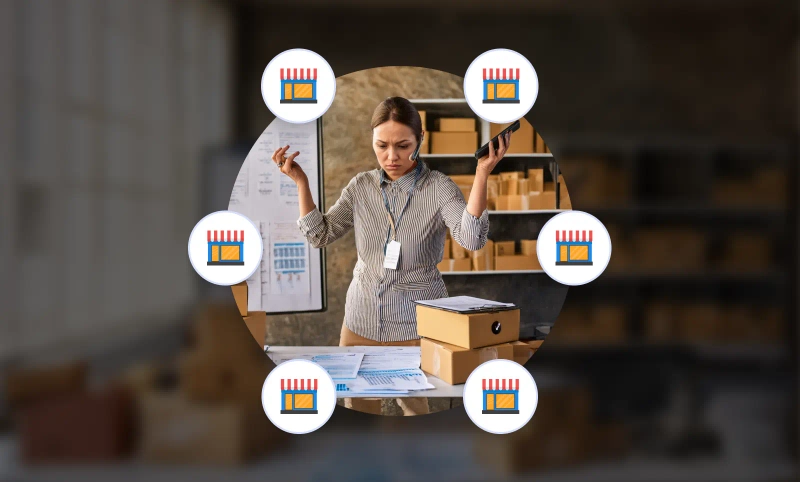
When you run multiple outlets, things do not fall apart all at once. They unravel slowly.
Let’s look at where things start to go wrong and why they often stay hidden until it’s too late.
Inventory Becomes a Guessing Game
One of the first signs of breakdown is in your stock. Without centralized visibility, each outlet handles inventory in isolation.
One store might be overstocked while another keeps running out of essentials. You lose opportunities to redistribute efficiently and end up placing emergency orders for items you already own in a different location.
If you do not have real-time inventory syncing, you are left relying on manual checks or delayed updates.
That is where the real cost begins — not just in lost sales but in wasted capital sitting on shelves.
A centralized store management solution can align inventory across outlets, letting you track, reorder, and transfer stock in real time. It also helps reduce shrinkage, minimize spoilage, and forecast demand more accurately.
Reports Are Always Late — and Inconsistent
You ask for last week’s sales. Your managers send spreadsheets — all in different formats, and none of them fully updated. You try to compare outlet performance, but the data does not line up. So you wait another day, or two, or more.
By the time the reports arrive, the moment to act has already passed.
This is one of the biggest challenges in franchise store management — lack of real-time reporting. When your data is fragmented, your decisions become reactive instead of proactive.
A centralized dashboard software for multiple store locations gives you live reports from every outlet in the same format, on the same timeline. You can check sales, staff performance, top-selling items, and customer behavior without chasing down store managers or flipping through sheets.
Pricing and Promotions Start Drifting
When your outlets run independently, pricing starts to drift — and not always intentionally. One manager runs a different promotion. Another forgets to update a menu item. Soon, two customers in different areas are paying different prices for the same product, and neither of them is happy.
This disconnect hurts your brand trust and your margins. And when you try to fix it? You end up calling each manager individually, hoping everyone makes the same change.
That is where a multi-outlet store management software becomes critical. It lets you update pricing and promotions across all outlets from one place. You keep control over your margins and maintain a consistent customer experience — no matter how many stores you run.
What Happens When Everything Is Centralized?
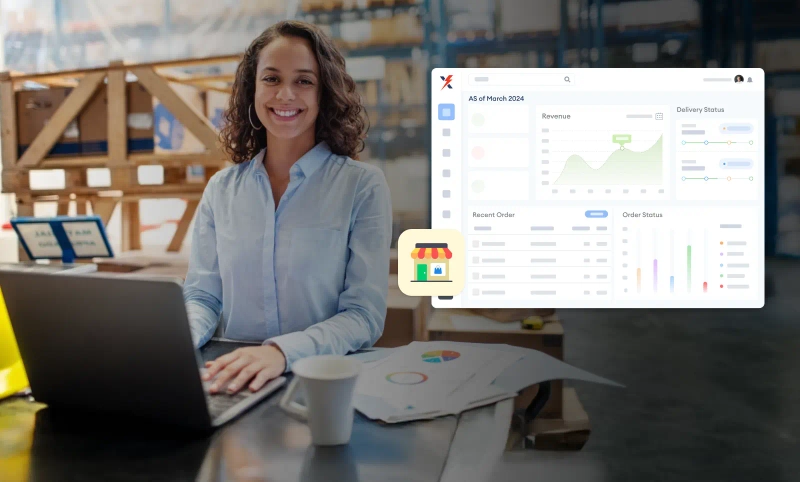
In the section below, you will see how a centralized store management software helps you regain control across every outlet.
From real-time inventory tracking to consistent pricing and instant reporting, you will understand how centralization turns daily struggles into smooth, scalable operations.
You Regain Control of Your Inventory
Instead of guessing what is in stock or waiting on someone to confirm, you can see live inventory across all your locations. You know exactly what is running low, what is overstocked, and where you can transfer items between outlets before placing a new order.
A strong multi-outlet management software does more than show you numbers. It gives you suggestions. It alerts you. It helps you reduce waste and maximize shelf space without needing constant manual checks. You are no longer managing inventory. You are optimizing it.
Your Pricing, Menus, and Policies Stay Consistent
Whether you run a restaurant chain, a grocery network, or a franchise brand, consistency matters. You want your customers to trust that what they experience in one location is what they will get everywhere else.
With a franchise store management software, you can roll out updates to all outlets from one place. Change a price. Adjust a menu. Add a promotion. It reflects instantly across every store. No calls. No delays. No mistakes. And if you want certain offers to apply only in specific locations, you can do that too.
Your team no longer has to remember what to change. The system does it for them. This is how you protect your brand and your margins at the same time.
Your Reporting Becomes Instant and Actionable
Instead of collecting reports at the end of the week or the end of the month, you start each day with live data. You see which stores are performing well, which items are selling out, which staff members are driving the most revenue. And you see it all in a single dashboard.
This is the power of a centralized dashboard software for multiple store locations. It replaces outdated spreadsheets and manual consolidation with real-time insights you can act on. Your decisions become sharper. Your reactions become faster. And your operations become smoother — across every store.
A Real Example: How a Grocery Brand Grew Without Losing Control
You have just seen what happens when everything is centralized. But if you are still wondering whether this actually works in the real world, let me walk you through a story you might recognize.
The Business Was Growing — But So Were the Problems
One of our clients, a successful grocery chain, started with just four stores. They were doing well. Sales were steady, and the team was confident.
But as they opened more outlets, things started slipping. Stockouts became more frequent. One store had too much of something while another ran out. Pricing was inconsistent across locations.
Reports came in different formats and were often late. Even though they were using digital tools, none of them were connected. Every store was managing itself like a separate business.
They were expanding fast, but they were losing control even faster.
The Shift to Centralized Store Management Software
That is when the team decided to switch to a multi-outlet store management software. They needed one platform that could connect all stores, align their operations, and reduce the chaos.
The impact was immediate. Inventory became visible in real time across all outlets. If one store had excess, it could be transferred before placing a new order.
Pricing and promotions were updated once and synced across every location — no back-and-forth phone calls or manual edits.
The managers felt the difference almost instantly. Instead of reacting to problems, they started making proactive decisions.
The Results: Efficiency, Consistency, and Confidence
After centralizing their system, operations became predictable. Costs went down. Inventory was under control. And the leadership team finally had the data they needed to move faster and smarter.
But the biggest win? The customer experience.
Every store now delivered the same pricing, the same quality, and the same service. No more inconsistencies from location to location. The brand felt unified and customers noticed.
Why This Matters for Your Business?
If you are facing similar challenges, this is not just another case study. It is a reflection of what many growing businesses go through when systems are disconnected. And it is proof of what changes when you move to the right solution.
A strong centralized store management software is not a luxury. It is the foundation modern retail needs to scale without losing control.
What Happens When You Keep Running Things Manually?
Without a centralized store management software, managing stores manually might seem fine at first, but over time, it slows you down, adds hidden costs, and stretches your team thin.
Here’s where that approach starts holding you back.
You Waste Time Chasing Basic Information
Instead of focusing on growth, you spend your time asking for updates.
- What are the top-selling products this week?
- Which store is underperforming?
- What inventory needs to be reordered?
These are questions your system should be answering, not your store managers.
Without a proper store management software, every report becomes a task. And when the data finally arrives, it is often incomplete or outdated.
This delay leads to missed opportunities, poor forecasting, and reactive decisions.
Time is one of your most valuable resources. If your current setup is wasting it, then your system is holding you back.
Your Costs Quietly Go Up
Every time a store over-orders, every time a product sits on the shelf for too long, and every time you miss a restock, it costs you money.
Not always in a dramatic way, but enough to chip away at your margins month after month.
The biggest issue? You cannot fix what you cannot see. When you are working with scattered tools and disconnected stores, you do not even know where the losses are happening.
A centralized store management software helps you detect these small leaks before they turn into financial drains. It gives you real-time visibility and control across all your stores, helping you save money and run leaner operations.
You Burn Out Your Team Without Realizing It
Manual management does not just affect your numbers. It affects your people. Your staff spends hours reconciling sales, checking inventory manually, and answering repetitive questions that a system could solve in seconds.
As your business grows, the workload increases. But the tools stay the same. Eventually, your managers become overwhelmed. Errors increase. Frustration builds. And retention drops.
The right franchise store management software takes pressure off your team. It replaces repetition with automation. It allows managers to lead instead of chase down tasks. And it makes your operations smoother for everyone involved.
When you keep doing everything manually, you might feel like you are in control. But in reality, you are spending more time managing your business and less time growing it. And that trade-off becomes more expensive the bigger you get.
Final Thoughts: Run All Your Stores With Less Stress and More Clarity
You have seen what happens when systems are scattered. You have also seen what changes when everything is connected.
From reducing stock issues to aligning pricing and getting real-time reports, a centralized store management software transforms the way you run every outlet. It gives you back control without adding more work.
Instead of managing each store separately, you lead them all from one place. If you are serious about scaling without losing visibility, this is the shift your business needs.
Centralization is not just a fix. it is the foundation for smarter, faster, and more confident operations.
Tired of managing chaos across multiple outlets?
People Also Ask
Centralized store management software is a system that helps you manage all your store operations from one place. It includes inventory, sales, reporting, and staff across every outlet.
Centralized store management software helps multi-outlet businesses by giving you one system to track stock, manage pricing, and view reports for all your stores in real time.
The main challenges in franchise store management include inconsistent pricing, poor reporting, inventory issues, and lack of control over brand standards.
A franchise store management solution is software that helps franchise owners control pricing, inventory, and store performance across all their locations from one platform.
Yes, a centralized store management solution works well for small businesses that have more than one store and want to manage everything from one system.
Store management software is used to manage your store’s daily operations such as sales, stock, billing, staff tracking, and performance reports.
Multi-outlet management software improves reporting by giving you real-time data from every outlet in one dashboard. This helps you make faster and smarter decisions.
Centralized dashboard software for multiple store locations is a system that lets you see and manage data from all your outlets in one screen.


